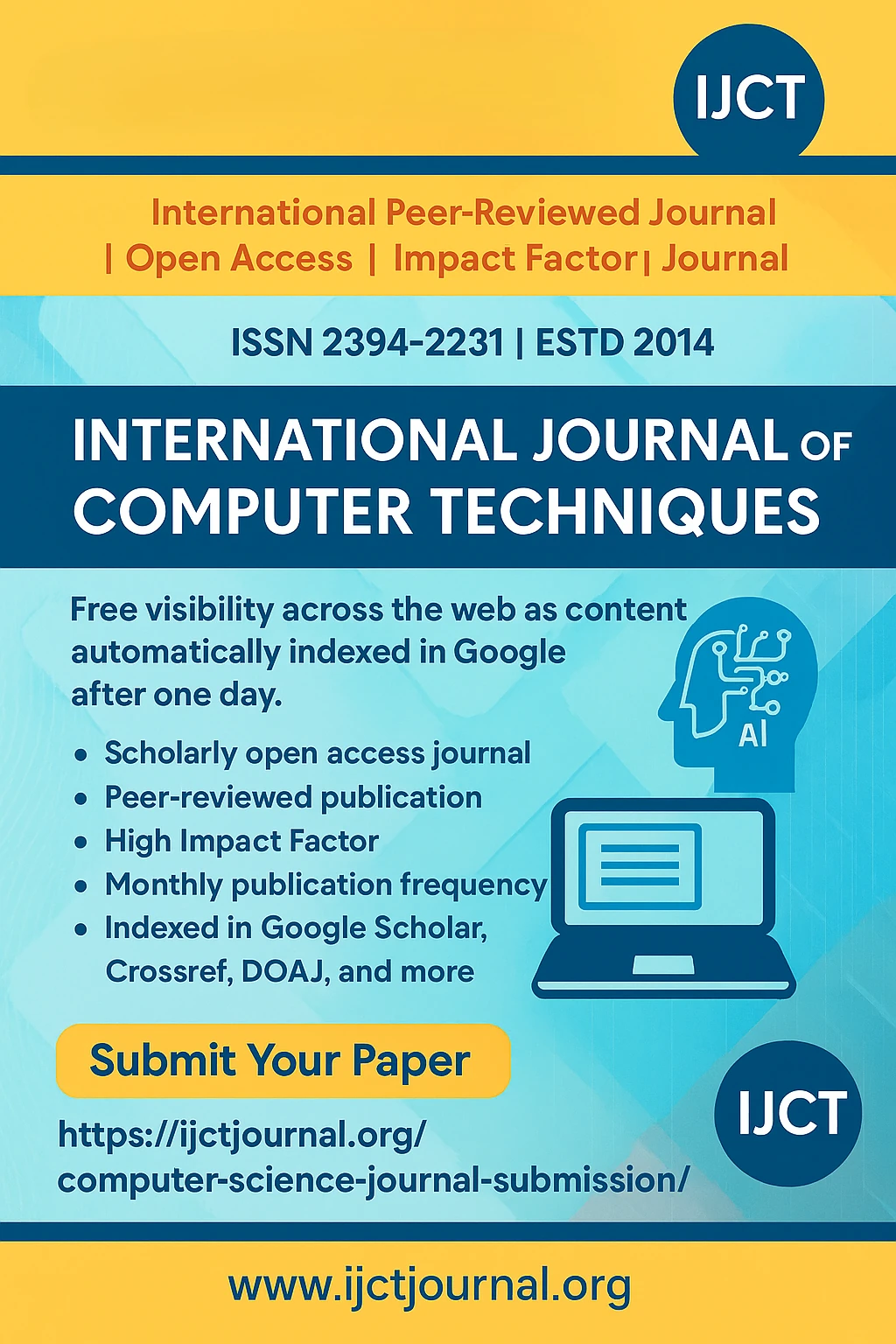
A Unified Ride-Hailing Aggregation Platform for Optimized Cab Selection Using Multi-Criteria Decision Analysis | IJCT Volume 12 – Issue 6 | IJCT-V12I6P9


International Journal of Computer Techniques
ISSN 2394-2231
Volume 12, Issue 6 | Published: November – December 2025
Author
Meghraj Nair, Mehvish Fatma, Tanishq Arora, Disha Bendre, Dr. Hari Kumar Palani
Abstract
The rapid expansion of app-based ride-hailing services has trans- formed urban mobility, yet it has also introduced significant frag- mentation into the market. Commuters face the challenge of select- ing the most suitable ride amidst varying prices, estimated times of arrival (ETA), and comfort levels across different providers like Ola and Uber. This paper proposes a unified ride-hailing aggre- gation platform that integrates multiple providers and presents optimized ride options based on a multi-criteria decision-making model. The system architecture comprises four distinct layers—data acquisition, normalization, decision-making, and user interface—to create a seamless data processing pipeline. The core of the plat- form is a decision engine that employs the Weighted Sum Model (WSM) to rank alternatives based on user-defined preferences for cost, ETA, and comfort. Simulation experiments demonstrate the platform’s efficacy, indicating a significant reduction in commuter decision-making time by up to 69% and average fare savings of 12%. By providing a transparent, efficient, and user-centric solu- tion, the proposed platform represents a significant contribution to smart mobility and the practical realization of Mobility-as-a-Service (MaaS) principles.
Keywords
Ride-hailing, Aggregator Platform, Decision Support, ETA Opti- mization, Smart Mobility, Multi-criteria Decision Making, Weighted Sum Model, Urban Computing.
Conclusion
This research addressed the problem of market fragmentation in the urban ride-hailing sector, which imposes significant inefficien- cies and cognitive load on commuters. A unified aggregation plat- form was designed and developed to integrate multiple service providers into a single interface. The core contribution of this work is the application of a formal Multi-Criteria Decision-Making model, specifically the Weighted Sum Model, to provide holistic and opti- mized ride recommendations based on cost, ETA, and comfort. The simulation-based evaluation demonstrated the platform’s substan- tial benefits, including a 69.2% reduction in user decision time, an 11.9% average saving on fares, and a 40.6% improvement in overall user satisfaction. By providing a transparent, efficient, and user-centric solution, ag- gregation platforms can play a pivotal role in streamlining urban commuting and overcoming the barriers created by a competitive yet siloed market. Such systems are a critical step toward realizing the full potential of the Mobility-as-a-Service vision, where trans- portation is viewed as a seamless, integrated utility. Future work will focus on the challenges of live deployment and the integration of intelligent personalization features, which will further enhance the commuter experience and solidify the role of aggregators as indispensable tools for modern urban mobility.
References
[1]R. R. Clewlow and G. S. Mishra, Disruptive Transportation: The Adoption, Utilization, and Impacts of Ride-Hailing in the United States. Institute of Transportation Studies, University of California, Davis, Research Report UCD-ITS-RR-17-07, 2017.
S. Kumar et al., “API-Based Fare Comparison System for Multi-Provider Ride-Hailing,” IEEE Access, 2021.
Z. Li and H. Zhang, “Dynamic Pricing Models in Ride-Hailing Systems,” Springer Transportation Research, 2022. [4]Ola Cabs, Ola Developer API Guide. Available: https://developer.olacabs.com
[5]R. Patel and D. Mehta, “Cross-Platform Ride Comparison Using Data Aggregation,”
International Journal of Engineering Research & Technology (IJERT), 2023.
[6]L. Rayle, D. Dai, N. Chan, R. Cervero, and S. Shaheen, “Just a better taxi? A survey- based comparison of taxis, transit, and ridesourcing services in San Francisco,” Transport Policy, vol. 45, pp. 168-178, 2016.
[7]K. T. Talluri and G. J. Van Ryzin, The theory and practice of revenue management. Springer Science & Business Media, 2004.
[8]Uber, Uber Developer Documentation. Available: https://developer.uber.com
L. Zha, Y. Yin, and Y. Du, “Surge pricing and labor supply in the ride-sourcing market,” Transportation Research Part B: Methodological, vol. 117, pp. 708-722, 2018
How to Cite This Paper
Meghraj Nair, Mehvish Fatma, Tanishq Arora, Disha Bendre, Dr. Hari Kumar Palani (2025). A Unified Ride-Hailing Aggregation Platform for Optimized Cab Selection Using Multi-Criteria Decision Analysis. International Journal of Computer Techniques, 12(6). ISSN: 2394-2231.









